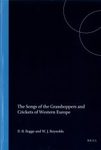Call us (08:30-17:00 UK)
01803 865913International
+44 1803 865913Need Help?
Help pagesWildlife Survey & Monitoring
Field Guides & Natural History
Academic & Professional Books
- Evolutionary Biology
- Evolution
- Human Evolution & Anthropology
- Cladistics, Phylogeny & Taxonomy
- View All
British Wildlife
British Wildlife is the leading natural history magazine in the UK, providing essential reading for both enthusiast and professional naturalists and wildlife conservationists. Published eight times a year, British Wildlife bridges the gap between popular writing and scientific literature through a combination of long-form articles, regular columns and reports, book reviews and letters.
Conservation Land Management
Conservation Land Management (CLM) is a quarterly magazine that is widely regarded as essential reading for all who are involved in land management for nature conservation, across the British Isles. CLM includes long-form articles, events listings, publication reviews, new product information and updates, reports of conferences and letters.





![Jugendstadien der Heuschrecken der Schweiz [Juvenile Stages of the Grasshoppers of Switzerland] Jugendstadien der Heuschrecken der Schweiz [Juvenile Stages of the Grasshoppers of Switzerland]](http://mediacdn.nhbs.com/jackets/jackets_resizer_xlarge/25/252131.jpg?height=620)
![Jugendstadien der Heuschrecken der Schweiz [Juvenile Stages of the Grasshoppers of Switzerland]](http://mediacdn.nhbs.com/jackets/jackets_resizer/25/252131.jpg)
![Jugendstadien der Heuschrecken der Schweiz [Juvenile Stages of the Grasshoppers of Switzerland]](http://mediacdn.nhbs.com/jackets/jackets_resizer/25/252131_1.jpg)
![Jugendstadien der Heuschrecken der Schweiz [Juvenile Stages of the Grasshoppers of Switzerland]](http://mediacdn.nhbs.com/jackets/jackets_resizer/25/252131_2.jpg)
![Jugendstadien der Heuschrecken der Schweiz [Juvenile Stages of the Grasshoppers of Switzerland]](http://mediacdn.nhbs.com/jackets/jackets_resizer/25/252131_3.jpg)
![Jugendstadien der Heuschrecken der Schweiz [Juvenile Stages of the Grasshoppers of Switzerland]](http://mediacdn.nhbs.com/jackets/jackets_resizer/25/252131_4.jpg)
![Jugendstadien der Heuschrecken der Schweiz [Juvenile Stages of the Grasshoppers of Switzerland]](http://mediacdn.nhbs.com/jackets/jackets_resizer/25/252131_5.jpg)














![Cahier d'Identification des Orthoptères de France, Belgique, Luxembourg & Suisse [Identification Guide to the Orthoptera of France, Belgium, Luxembourg and Switzerland]](http://mediacdn.nhbs.com/jackets/jackets_resizer_medium/26/265812.jpg?height=150&width=103)

![Das Herbarium des Felix Platter: Die Älteste Wissenschaftliche Pflanzensammlung der Schweiz [The Herbarium of Felix Platter: The Oldest Scientific Plant Collection of Switzerland]](http://mediacdn.nhbs.com/jackets/jackets_resizer_medium/23/230349.jpg?height=150&width=120)

![Marder, Iltis, Nerz und Wiesel: Kleine Tiere, große Jäger [Martens, Polecats, Minks And Weasels: Small Animals, Big Hunters]](http://mediacdn.nhbs.com/jackets/jackets_resizer_medium/23/230635.jpg?height=150&width=105)
![Wimperfledermaus, Bechsteinfledermaus und Mopsfledermaus: Einblicke in die Lebensweise Gefährdeter Arten in Baden-Württemberg [Geoffroy's Bat, Bechstein's Bat and Barbastelle: Insights into the Lives of Endangered Species in Baden-Württemberg]](http://mediacdn.nhbs.com/jackets/jackets_resizer_medium/21/219903.jpg?height=150&width=103)
![Flora Helvetica: Illustrierte Flora der Schweiz [Flora Helvetica: Illustrated Flora of Switzerland]](http://mediacdn.nhbs.com/jackets/jackets_resizer_medium/26/264404.jpg?height=150&width=101)
![Lebensraum Federkleid: Federn und Federbewohner Heimischer Vögel [Plumage as Habitat: Feathers of Domestic Birds and their Parasitic Residents]](http://mediacdn.nhbs.com/jackets/jackets_resizer_medium/22/225536.jpg?height=150&width=103)
![Flora Vegetativa: Ein Bestimmungsbuch für Pflanzen der Schweiz im Blütenlosen Zustand [Flora Vegetativa: An Identification Book for Plants in Switzerland without Flowers]](http://mediacdn.nhbs.com/jackets/jackets_resizer_medium/24/249633.jpg?height=150&width=98)
![Libellen Europas: Der Bestimmungsführer [Field Guide to the Dragonflies of Britain and Europe]](http://mediacdn.nhbs.com/jackets/jackets_resizer_medium/25/251176.jpg?height=150&width=95)

![Schmetterlinge der Alpen: Der Bestimmungsführer für alle Arten [Butterflies of the Alps: Identification Guide to All Species]](http://mediacdn.nhbs.com/jackets/jackets_resizer_medium/21/210853.jpg?height=150&width=95)
![Farne, Schachtelhalme und Bärlappe: Der Naturführer zu den Farnpflanzen Mitteleuropas [Ferns, Horsetails and Clubmosses: The Field Guide to the ferns of Central Europe]](http://mediacdn.nhbs.com/jackets/jackets_resizer_medium/25/254162.jpg?height=150&width=104)
![Die Geheimnisvolle Welt der Pilze: Das Natur-Mitmachbuch für Kinder [The Mysterious World of Fungi: The Nature Activity Book for Children]](http://mediacdn.nhbs.com/jackets/jackets_resizer_medium/22/225586.jpg?height=150&width=136)